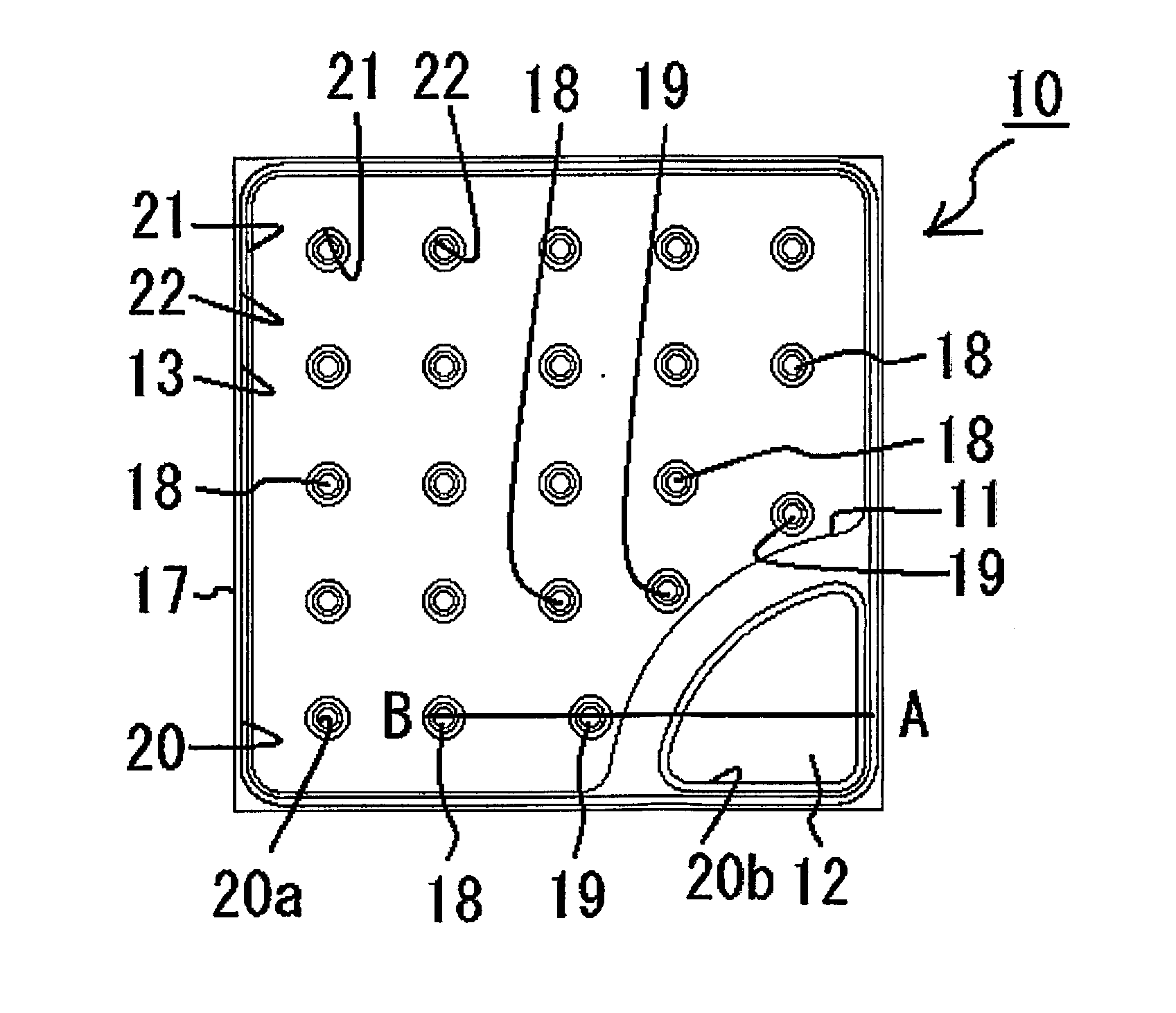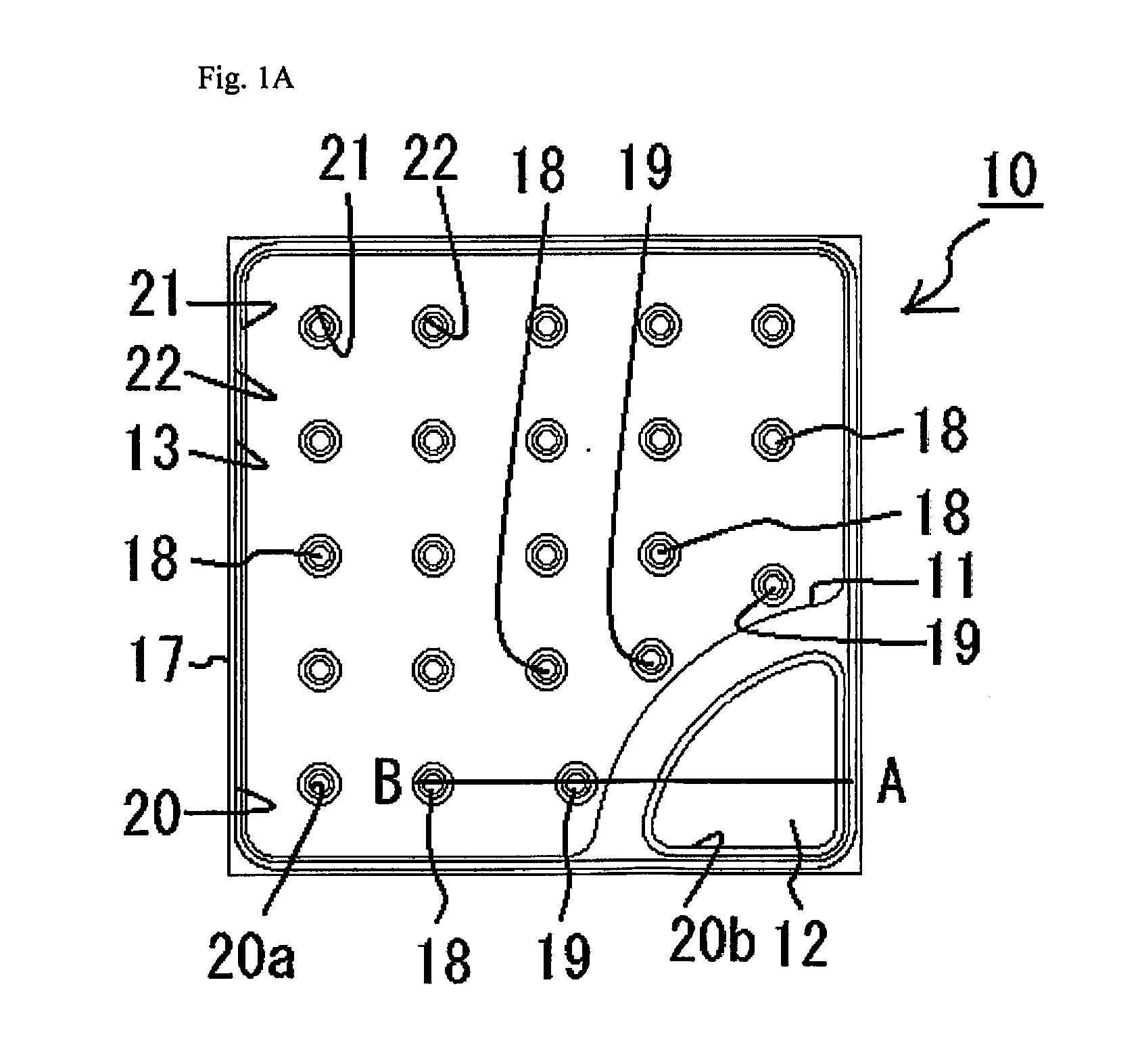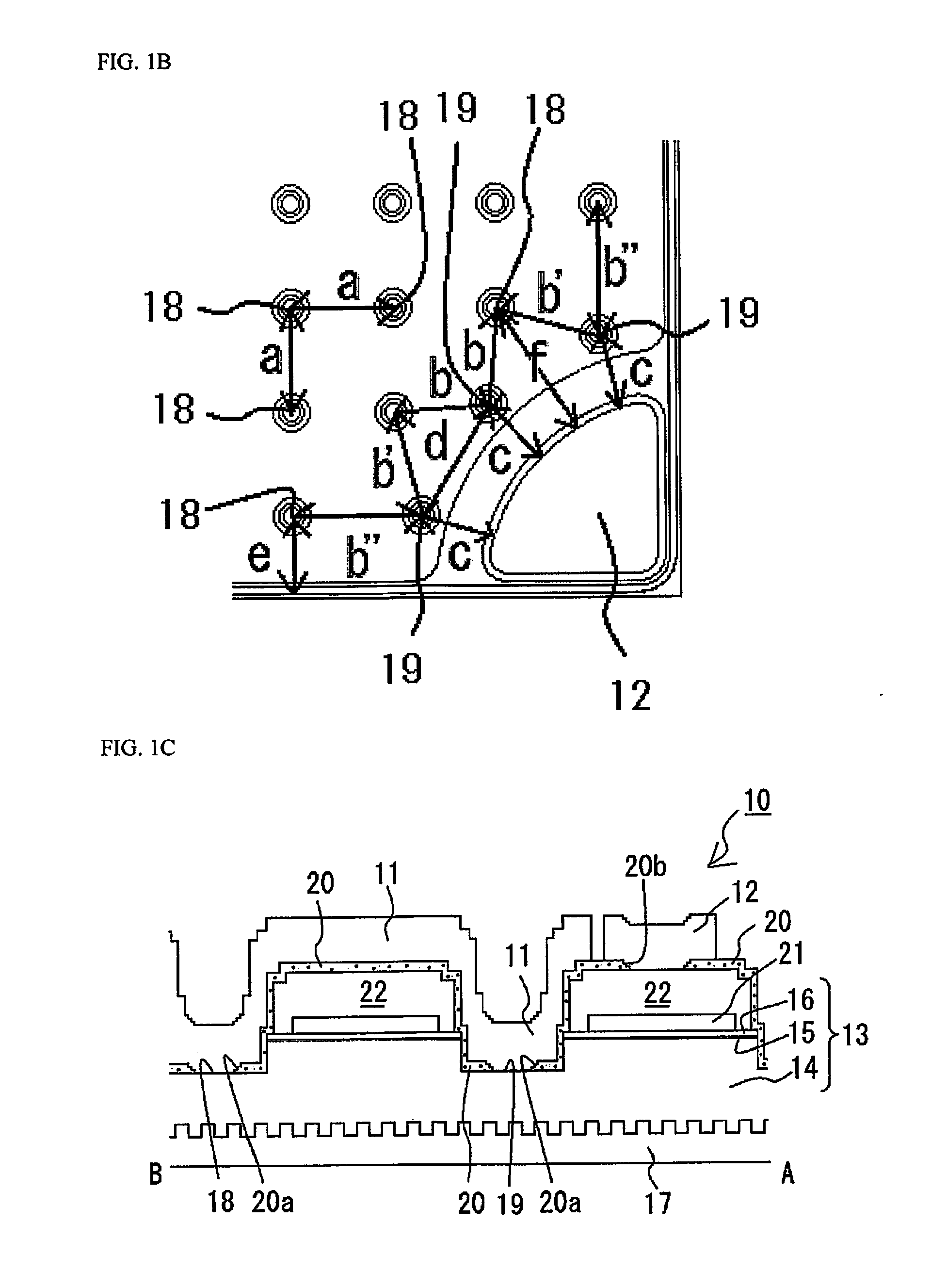Light emitting element and light emitting device using the same
a technology of light emitting devices and light emitting elements, which is applied in the direction of basic electric elements, electrical devices, and semiconductor devices, can solve problems such as deviations in luminance distribution, and achieve the effect of reducing uneven luminance distribution
- Summary
- Abstract
- Description
- Claims
- Application Information
AI Technical Summary
Benefits of technology
Problems solved by technology
Method used
Image
Examples
embodiment 1
Light Emitting Element
[0066]The light emitting element 10 according to Embodiment 1 includes, as shown in FIG. 1A to FIG. 1D, a semiconductor stacked layer body 13 having an approximately square shape in a plan view, an n-side electrode 11 and a p-side electrode 12 respectively connected to corresponding portions on a same surface side of the semiconductor stacked layer body 13. The length of one side of the light emitting element 10 is 1.4 mm.
[0067]The semiconductor stacked layer body 13 is constituted with an n-type semiconductor layer 14, an active layer 15, and a p-type semiconductor layer 16 disposed in this order on a sapphire substrate which has an approximately square shape in a plan view with a protrusion-recess shape on its upper surface.
[0068]The semiconductor stacked layer body 13 has a plurality of exposed portions on its inward side, where portions of the p-type semiconductor layer 16 and the active layer 15 are removed to expose corresponding portions of the n-type se...
embodiment 2
Light Emitting Element
[0077]The light emitting element 40 according to Embodiment 2 includes, as shown in FIG. 1A to FIG. 1D, a semiconductor stacked layer body 13 having an approximately square shape in a plan view, an n-side electrode 51 and a p-side electrode 52 respectively connected to corresponding portions on a same surface side of the semiconductor stacked layer body 13. The configurations of the sapphire substrate 17 and the semiconductor stacked layer body 13 are similar to the configuration of the light emitting element 10. The first exposed portions 18 and the second exposed portion 19 are, in a plan view, arranged in a similar manner as in the light emitting element 10 of Embodiment 1.
[0078]A light-transmissive electrically conductive layer 53 (a thickness of about 0.1 μm) of an ITO is disposed on approximately the entire surfaces of the first exposed portions 18 and the second exposed portions 19 and on approximately the entire upper surface of the p-type semiconductor...
embodiment 3
[0090]As shown in FIGS. 4A to 4C, the light emitting device 60 includes the light emitting element 10 according to Embodiment 1, and a base member 61 which has a wiring pattern on its surface. The wiring pattern includes a pair of patterns being a positive pattern and a negative pattern. Preferably, auxiliary patterns further connect the positive pattern and the negative pattern.
[0091]In order to mount a light emitting element in a face-down manner, the n-side electrode 11 and the p-side electrode 12 of the light emitting element 10 are respectively connected to the corresponding wiring patterns of the base member 61 via a joining member. In this case, the joining member may be disposed not at the light emitting element 10 side but at the wiring pattern side of the base member 61.
[0092]In the light emitting device 60, the light emitting element 10 is covered with the light-transmissive member 63. The sealing member 63 is, for example, made of a silicone resin co...
PUM
 Login to View More
Login to View More Abstract
Description
Claims
Application Information
 Login to View More
Login to View More - R&D
- Intellectual Property
- Life Sciences
- Materials
- Tech Scout
- Unparalleled Data Quality
- Higher Quality Content
- 60% Fewer Hallucinations
Browse by: Latest US Patents, China's latest patents, Technical Efficacy Thesaurus, Application Domain, Technology Topic, Popular Technical Reports.
© 2025 PatSnap. All rights reserved.Legal|Privacy policy|Modern Slavery Act Transparency Statement|Sitemap|About US| Contact US: help@patsnap.com



